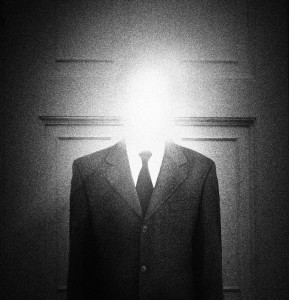The Age of Information and Hyperconnectivity (Part 3)
By Asher Crispe: November 24, 2014: Category Inspirations, Networks of Meaning
 Focus. When an object in front of us seems to quiver with intractable vagueness we endeavor to strain our mind’s eye till it comes into resolution. The object appears to have shaken off its coat of ambiguity for the moment. Yet, very often the blink-less persistent stare overloads our visual grasp and the contours of the form burst at the seams. Over-definition, far from keep its composure, leaks out from the single figure that it traces and leaves us with the impression of ill-defined multi-faceted simulacrum. As an intellectual exercise, this usually results from the consideration of excessive detail or too many connections both within the object and with respect to its context.
Focus. When an object in front of us seems to quiver with intractable vagueness we endeavor to strain our mind’s eye till it comes into resolution. The object appears to have shaken off its coat of ambiguity for the moment. Yet, very often the blink-less persistent stare overloads our visual grasp and the contours of the form burst at the seams. Over-definition, far from keep its composure, leaks out from the single figure that it traces and leaves us with the impression of ill-defined multi-faceted simulacrum. As an intellectual exercise, this usually results from the consideration of excessive detail or too many connections both within the object and with respect to its context.
In our narrative of the flood of Noach/Noah, we encounter this problem when the Torah (Genesis 6:12) speaks of a world where “…all flesh had corrupted its way on the earth.” Borrowing from the commentary on this verse from Rabbi Tzvi Elimelech of Dinov (1783-1841) in his work Erga D’Chala, we find that he magnifies the significance of the expression “all flesh” and frames it in terms of the kabbalistic generalization of the body as being comprised of flesh and bone. He notes that in the mystical mapping of the symbolic body, the ‘limb’ that is considered to be “all flesh” is the male procreative organ for it contains no ‘bone.’
Bone (etzem in Hebrew) also means ‘essence,’ while flesh (basar) also carries the double meaning of ‘bringing tidings’ or news (bisair). Bone is intensive. Flesh is extensive. Likewise, essentialism remains unexpressed and unexposed on the dark underside of an object (our figurative ‘body’), while the ‘fleshing out’ of our perception, as well as the bulk of its presentation to our senses, thickens with each new layer of information draped atop it like successive layers of tissue. One might argue that the outer strata are non-essential and may be removed without compromising the structural integrity of the essence. Nonetheless, the ‘stem-cells’ that generated and continue to regenerate the projected non-essential information themselves derive from the inner narrow of the bone-essence. Beyond a causal relationship, the mutually beneficial bond that typifies the inside/outside, bone/flesh, mute intensive being/expression, necessitates that we treat them as a critical pairing.
Returning back to the aforementioned commentary, what is the connotation of a part of the body that has flesh without bone? Moreover, given all the emphasis on covenants realized through circumcision (brit milah), how does this fit with the overall notion of the male procreative organ representing a self-other, subject-object, bridge? Echoing the Biblical sense of knowing as a euphemism for sex, the reverse is also true: knowledge really amounts to a kind of cognitive sexuality or synthesis. Hyperconnectivity is akin to hypersexuality. With links everywhere it becomes challenging to differentiate separate bodies. Identities become confused.
Nevertheless, there is a substitute for a bone/essence within the creative connections that we put forth into the world. In order to produce a link, the male procreative organ has to fill with blood. In Hebrew “blood” is dam which pertains to the play of resemblances (demut–literally ‘likeness’) and the imaginative faculty (koach hamedameh). Blood, rather than bone as the core of creative expression, suggests that there is something non-essentialistic that inwardly motivates communication. Roused in the moment, it circulates resemblances which temporally build its relatability. While it might feign essentialism (with a pretense of bone-essence), it is really covenantal (for instance brit milah, the ‘covenant of circumcision’ can also be read as the ‘covenant of the word’ in that milah also means a ‘word,’ especially in the promissory manner of giving or pledging one’s word). In this case, the promise of a word is that it connects with the world or the object(s) that it designates in the world.
Taken in this light, the “corruption of all flesh” marks the issue of information entropy. Too much information and the information is in danger of self-canceling and becoming drowned in noise of its own making. Relationships, now too fluid, often dissolve as quickly as they are formed in the promiscuity of assigning temporary bar codes and digital tags to commercial goods whose planned obsolescence and recycling renders them meaningless the instant that they are removed from the shelf. These are signifiers with no long term commitment to remain attached to their signifieds. Marriage is out of the question as the information age embraces only the flirtatious behavior of signs and seems to mandate a casual dating of subject and object as its theory of knowledge.
All of this is said only of the signifier side (with the relativism of ‘all-flesh’ being corrupted). What then are we to understand by this happening “on the earth?” Various rabbinical authorities spell out the nature (or rather unnatural nature) of this corruption as a wide spread ‘spilling of seed’ (zera l’vatala). On a metaphoric level, seed alludes to the process of semiosis or dissemination within the linguistic sphere. A sign from a broken home no longer lives with both its parents (the signifier father and the signified mother). In fact, the sign may never be born if the signifier cannot adhere to the signified long enough for conception to take place. The “earth” in this scenario refers to the objective ‘real’ world. Detaching from the ‘real world’ out of lack of maintaining the integrity of a covenantal promise, jeopardizes the status of the earth itself. Causal discourse/intercourse without commitment has the effect of sterilizing the environment (often depicted in Chassidic thought as the flood waters purifying the earth and its inhabitants) and if it were to beget anything it would be violence–in the sense of the violation of identities as everything becomes a virtually interchangeable coupling of word and world.
Thus, the earth, the grounding within the real, the objective world, disappears. We have a crisis of foundations. Apropos of this, of all the powers of the soul described in Kabbalah, the one that relates to the procreative organs is called yesod which itself means ‘foundation.” Consequently, a ‘corruption of all flesh’ is an erosion of foundations. Feeling the loss of foundations within our present day institutions of higher learning, manifests as endlessly contested discourses questioning the accessibility to truth. Chassidic literature, with its emphasis on the guarding of the covenant (brit) and preservation of our foundation (yesod), to a great extent counters this prevailing post-modern tendency whilst acknowledging and addressing its finer points. We must negotiate our foundation (after all it pertains to the self-other relation and language) and preserve a means of mediating truth claims. The inner aspect of maintaining a foundation (yesod) is truth (emet) or rather (l’emet) to verify. As such, the loss of foundations, the corruption of all flesh–where everything seems like everything else in a infinite play of resemblances–results in the loss of the earth or the objective sphere. It floods with in-distinction.
 According to the famed Torah sage, Rabbi Yitzchak Abarbanel (1437-1508), the flood changed the order of Creation to the point where one could not see the sun upon the earth. There was no distinction between day and night, warm and cold. There was not even a distinction between plowing/seeding and harvesting (see his commentary to Genesis 8:15-18). All of these extra details impress upon us that notion that the flood represents a break down of the factors and features that embody the natural world. More particularly, all of the normal measures or signs by which we recognize the natural world have been eradicated. These waters were associated with a world of chaos. All that remains is a word-ark of our own construction within which we can try to establish a new foundation.
According to the famed Torah sage, Rabbi Yitzchak Abarbanel (1437-1508), the flood changed the order of Creation to the point where one could not see the sun upon the earth. There was no distinction between day and night, warm and cold. There was not even a distinction between plowing/seeding and harvesting (see his commentary to Genesis 8:15-18). All of these extra details impress upon us that notion that the flood represents a break down of the factors and features that embody the natural world. More particularly, all of the normal measures or signs by which we recognize the natural world have been eradicated. These waters were associated with a world of chaos. All that remains is a word-ark of our own construction within which we can try to establish a new foundation.
Following the diagnosis of Nietzsche (The Gay Science as quoted by Peter Sloterdijk) in an aphorism entitled “In the Horizon of the Infinite” we bear witness to a condition within our times where: “we have forsaken the land and gone to sea! We have destroyed the bridge behind us–more so, we have demolished the land behind us!”
In Part Four our energies will be spent on the rethinking of foundations within the confines of the word-ark.
http://www.interinclusion.org/inspirations/the-age-of-information-and-hyperconnectivity-part-4/
http://www.interinclusion.org/inspirations/the-age-of-information-and-hyperconnectivity-part-2/
The Age of Information and Hyperconnectivity (Part 3) ,













;)
;)
;)
;)
;)
;)
;)
;)
;)
;)
